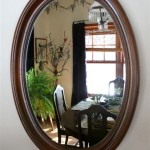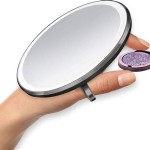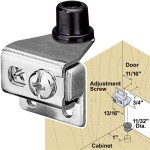How To Fix a Side Mirror on a Car with Glue
A damaged or detached side mirror on a vehicle presents both a safety hazard and a legal issue. Operating a vehicle without a functioning side mirror can impede visibility, increasing the risk of accidents. While professional auto repair shops offer comprehensive mirror replacement services, addressing the issue with adhesive can often provide a temporary or even long-lasting solution, depending on the extent of the damage. This article details the process of repairing a side mirror using adhesive, outlining the necessary materials, preparation steps, application techniques, and considerations for ensuring a secure and durable bond.
Before embarking on a glue-based repair, it is crucial to assess the condition of the side mirror assembly. Determine the nature of the damage: Is the mirror glass detached from its housing? Is the entire mirror assembly detached from the vehicle? Or is the plastic housing itself cracked or broken? This assessment will dictate the type of adhesive required and the complexity of the repair. Minor detachments of the mirror glass can often be effectively repaired with specialized adhesives. However, more extensive damage, such as a completely detached mirror assembly or severe cracks in the housing, may necessitate more robust repair techniques or even full replacement.
Key Point 1: Selecting the Appropriate Adhesive
The success of a glue-based side mirror repair hinges on selecting the correct type of adhesive. Not all adhesives are created equal, and using the wrong product can result in a weak bond that fails prematurely, especially when exposed to the elements. Several adhesive options are available, each with distinct characteristics and suitability for specific repair scenarios.
Epoxy Adhesives: Two-part epoxy adhesives are renowned for their strength, durability, and resistance to environmental factors. These adhesives consist of a resin and a hardener that, when mixed, create a chemical reaction, resulting in a rigid and robust bond. Epoxy is well-suited for bonding dissimilar materials, such as glass to plastic or metal. When using epoxy, meticulous mixing and application are essential to achieve optimal bonding. Consider using a slow-curing epoxy for more working time, especially for complex repairs.
Cyanoacrylate Adhesives (Super Glue): Cyanoacrylate adhesives, commonly known as super glue, offer rapid bonding and ease of use. However, these adhesives tend to be less flexible and may become brittle over time, particularly when exposed to temperature variations and vibrations. Super glue is best suited for small, clean breaks and temporary fixes. Use caution when applying super glue; it bonds skin rapidly and can be difficult to remove. Opt for a gel-type super glue for better control and gap-filling capabilities.
Automotive-Specific Adhesives: Several manufacturers offer adhesives specifically formulated for automotive applications, including side mirror repairs. These adhesives are designed to withstand the rigors of the automotive environment, including exposure to UV radiation, moisture, and temperature extremes. Automotive-specific adhesives often incorporate properties such as flexibility and vibration resistance, making them ideal for securing side mirrors. Consult product descriptions and reviews to choose an adhesive that is specifically recommended for side mirror repair.
Polyurethane Adhesives: Polyurethane adhesives offer a combination of strength, flexibility, and resistance to environmental factors. These adhesives are commonly used in automotive applications, such as bonding windshields and body panels. Polyurethane adhesives are well-suited for bonding large surfaces and filling gaps. However, polyurethane adhesives often require longer curing times and may release volatile organic compounds (VOCs) during the curing process. Ensure adequate ventilation when working with polyurethane adhesives.
When selecting an adhesive, consider the following factors: the type of materials being bonded (glass, plastic, metal), the size of the gap to be filled, the desired strength and durability of the bond, and the environmental conditions the repair will be exposed to. Always consult the manufacturer's instructions for specific application guidelines and safety precautions.
In addition to the adhesive itself, consider using a primer or adhesion promoter to enhance the bonding surface. Primers prepare the surface by removing contaminants and creating a more receptive surface for the adhesive. This can significantly improve the bond strength and longevity of the repair.
Key Point 2: Preparing the Surfaces for Bonding
Proper surface preparation is paramount to achieving a strong and durable bond. Even the highest-quality adhesive will fail if applied to a dirty, greasy, or otherwise contaminated surface. Thoroughly cleaning and preparing the surfaces to be bonded is a critical step in the repair process.
Cleaning: Begin by thoroughly cleaning the surfaces to be bonded. Remove any loose debris, dirt, grease, or old adhesive residue. Use a clean cloth or brush and a suitable cleaning agent, such as isopropyl alcohol or a dedicated automotive cleaner. Ensure that the cleaning agent is compatible with the materials being bonded. Avoid using harsh chemicals or abrasive cleaners that could damage the surfaces. For stubborn residue, consider using a plastic scraper or a specialized adhesive remover, being careful not to scratch or damage the mirror glass or housing.
Degreasing: After cleaning, degrease the surfaces to remove any remaining oil or grease. Use a degreasing agent, such as acetone or a dedicated automotive degreaser. Apply the degreaser to a clean cloth and wipe the surfaces thoroughly. Allow the degreaser to evaporate completely before proceeding. Degreasing is particularly important for plastic and metal surfaces, as these materials often have a coating of oil or grease that can interfere with bonding.
Abrading (Optional): For certain materials, such as plastic or metal, lightly abrading the surfaces can improve adhesion. Use fine-grit sandpaper (e.g., 220-grit or higher) to lightly roughen the surfaces. Abrading creates a mechanical bond, providing the adhesive with more surface area to grip. Be careful not to over-abrade the surfaces, as this could damage the materials. Remove any sanding dust with a clean cloth and isopropyl alcohol.
Priming (Recommended): Applying a primer or adhesion promoter can significantly enhance the bond strength, especially for difficult-to-bond materials, such as certain types of plastic. Choose a primer that is specifically designed for the adhesive being used and the materials being bonded. Apply the primer according to the manufacturer's instructions. Allow the primer to dry completely before applying the adhesive.
Ensure that all surfaces are completely dry before applying the adhesive. Moisture can weaken the bond and lead to premature failure. Use a clean, dry cloth to wipe the surfaces and allow them to air dry completely. In humid environments, consider using a heat gun or hair dryer to accelerate the drying process.
Proper surface preparation can significantly impact the success and longevity of the side mirror repair. Taking the time to thoroughly clean, degrease, and prime the surfaces will result in a stronger and more durable bond.
Key Point 3: Applying the Adhesive and Securing the Bond
With the adhesive selected and the surfaces properly prepared, the next step involves applying the adhesive and securing the bond. This requires careful attention to detail and adherence to the adhesive manufacturer's instructions.
Applying the Adhesive: Apply the adhesive sparingly and evenly to the prepared surfaces. Avoid applying excessive adhesive, as this can weaken the bond and create a messy appearance. Follow the manufacturer's instructions for the recommended application method. Some adhesives require a thin, even coat, while others may require a thicker bead. Use a small brush, applicator stick, or the adhesive's nozzle to apply the adhesive precisely. For two-part epoxies, ensure that the resin and hardener are thoroughly mixed according to the manufacturer's instructions before application.
Aligning the Components: Carefully align the components to be bonded. Ensure that the mirror glass is properly positioned within the housing and that the mirror assembly is correctly aligned with the vehicle's mounting point. Take your time and make any necessary adjustments before the adhesive sets. Once the adhesive begins to cure, it may be difficult to make adjustments without compromising the bond strength.
Clamping or Supporting: Secure the bonded components in place while the adhesive cures. Use clamps, tape, or other supporting devices to hold the components together firmly. Apply even pressure to ensure a uniform bond. The specific clamping or supporting method will depend on the size and shape of the components being bonded. Consult the adhesive manufacturer's instructions for the recommended clamping time and pressure. Avoid disturbing the bonded components during the curing process.
Curing Time: Allow the adhesive to cure completely according to the manufacturer's instructions. The curing time can vary depending on the type of adhesive and the environmental conditions. Avoid using the vehicle or subjecting the repaired side mirror to stress until the adhesive is fully cured. Premature use can weaken the bond and lead to failure.
Cleaning Up Excess Adhesive: Once the adhesive is fully cured, carefully remove any excess adhesive with a sharp blade or a specialized adhesive remover. Be careful not to scratch or damage the surrounding surfaces. Use a clean cloth and a suitable solvent to remove any remaining residue. A clean and professional finish will enhance the appearance of the repair.
Testing the Bond: After the adhesive is fully cured and the excess adhesive has been removed, test the strength of the bond. Gently apply pressure to the repaired side mirror to ensure that it is securely attached. If the bond appears weak or unstable, reapply the adhesive or consider seeking professional repair services.
By carefully applying the adhesive, aligning the components, securing the bond, and allowing the adhesive to cure completely, a strong and durable side mirror repair can be achieved. Always prioritize safety and follow the manufacturer's instructions for optimal results.

Car Mirror Glue What You Need To Know

Best Glue For Car Side Mirror Top 5 Glues Of 2024

3 Ways To Replace A Car S Side View Mirror Wikihow

Car Mirror Glue Replace Your Side With The Right

Best Glue For Car Side Mirror Reviews Top 6 Picks

How To Replace Side Mirror Glass On Your Car

Philkotse Guide 5 Steps To Do Side View Mirror Repair By Yourself

Top 5 Best Glue For Car Side Mirror 2024
How To Repair A Car Side Mirror With Adhesive Bonding Cover

3 Ways To Replace A Car S Side View Mirror Wikihow








